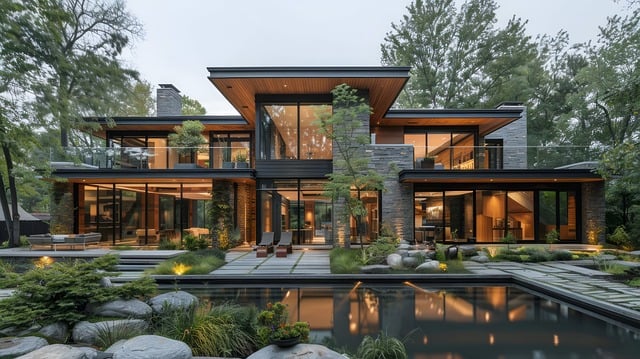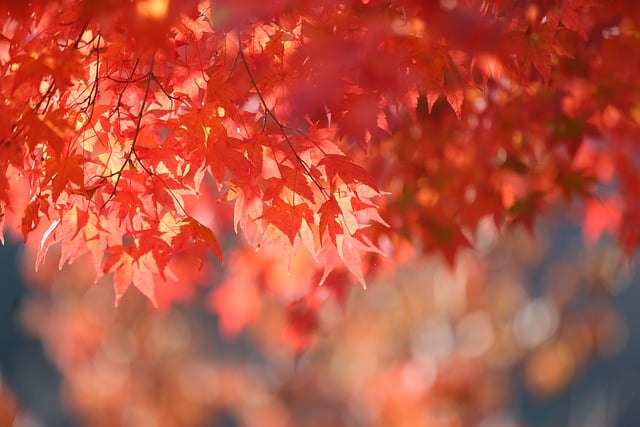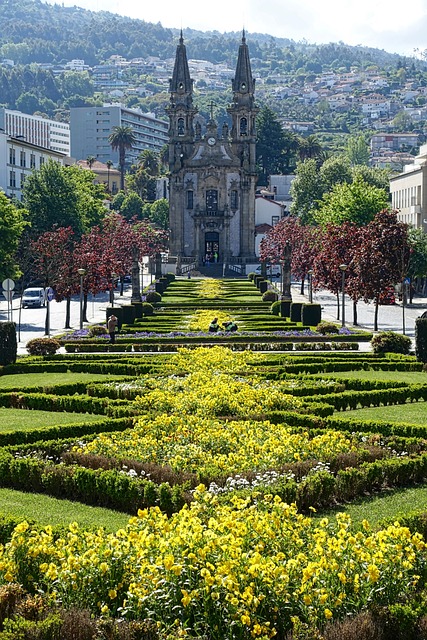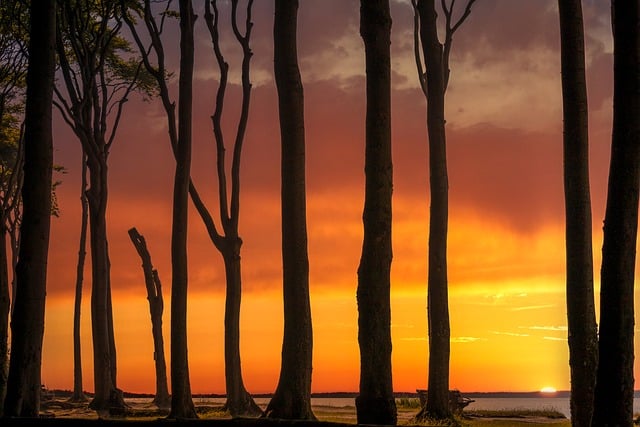To effectively transform a modest garden into an expansive retreat, strategic design and intentional landscaping choices are key. Utilize tall, slender plants and vertical gardens to enhance space perception, and incorporate multipurpose seating with hidden gardening tool storage for practicality. Reflective surfaces like mirrors can visually expand the garden, while every plant selection in a small garden should serve a purpose, ensuring privacy and aesthetic fullness without overcrowding. Employ xeriscaping principles to conserve water, using drought-resistant native plants that require minimal maintenance and support biodiversity. Integrate perennials with staggered bloom times for year-round interest, and position them to make the most of vertical space. Vertical gardening, through trellises and wall planters, can save ground space and create a visually rich landscape. Hardscaping elements like pathways and garden structures help define spaces within the garden, offering functionality while complementing the overall design. Garden accessories and strategic lighting enhance both the daytime appeal and nighttime ambiance, making the most of every inch for enjoyment from dawn to dusk. By considering sustainability, such as with eco-friendly lighting options, a small garden can become an efficient, beautiful, and multifunctional outdoor space that reflects the home's style and offers a serene retreat throughout the seasons.
Embark on a journey to transform your modest garden into an oasis of beauty and functionality with our expert tips. In this comprehensive guide, we’ll explore innovative landscaping techniques tailored for small spaces, from maximizing vertical potential to selecting drought-resistant plants that thrive in limited areas. Discover how strategic hardscaping elements can elevate both the utility and visual appeal of your garden, complemented by clever accessories and ambient lighting for a welcoming retreat. Whether you’re a novice gardener or an experienced horticulturist, these insights will help you master the art of small garden landscape design.
- Maximizing Space with Strategic Small Garden Landscaping
- Choosing the Right Plants for Compact Spaces: Xeriscaping and Perennial Picks
- Vertical Gardening Techniques to Enhance Your Small Landscape
- Smart Hardscaping Elements for Functional and Aesthetic Appeal in Small Gardens
- Integrating Garden Accessories and Lighting for a Welcoming and Usable Outdoor Space
Maximizing Space with Strategic Small Garden Landscaping

To transform a modest garden into an expansive retreat, strategic small garden landscaping is key. Optimal use of space can be achieved by thoughtfully incorporating various garden elements that serve multiple purposes. For instance, tall, slender plants and vertical gardens can create the illusion of depth and height, drawing the eye upward and making small spaces appear more spacious. Integrating seating that doubles as storage for gardening tools beneath can maximize both comfort and functionality. Additionally, utilizing mirrors or other reflective surfaces to catch and amplify light can visually expand the garden’s boundaries, creating a serene and larger-than-life atmosphere in even the smallest of spaces.
In small gardens, every square inch must work for its keep. Consider a multi-layered approach to landscaping, where taller plants like grasses or narrow trees provide privacy and definition, while ground covers and low-growing shrubs fill in the gaps without overwhelming the space. The use of varied textures and colors can add interest and depth, making the garden more engaging without the need for extensive space. Moreover, incorporating pathways that lead to different ‘rooms’ within the garden can create a sense of exploration, allowing for multiple vignettes within a small area. This approach not only optimizes the available landscape but also offers a dynamic and ever-changing experience as plants grow and change with the seasons.
Choosing the Right Plants for Compact Spaces: Xeriscaping and Perennial Picks

When optimizing small gardens, selecting the appropriate plants is paramount for a thriving landscape. Xeriscaping, a landscaping approach that focuses on water conservation and low-maintenance vegetation, is particularly suited to compact spaces. Drought-resistant and native plants are often ideal in xeriscape designs as they require minimal irrigation once established and are adapted to the local soil and climate conditions. These plants not only reduce the need for supplemental water but also support biodiversity by providing habitat for beneficial insects, birds, and other wildlife.
Incorporating perennials into your small garden can offer a low-effort, high-impact landscape all year round. Perennials return each growing season, creating a stable, mature foundation in your garden without the need to replant annually. When selecting perennials, consider their mature size to ensure they won’t outgrow the available space, and choose varieties with different bloom times to extend the visual appeal of your garden throughout the seasons. Strategic plant spacing and layering, from taller plants in the back to shorter ones in the front, can maximize the use of vertical space and enhance the overall aesthetic of your landscape.
Vertical Gardening Techniques to Enhance Your Small Landscape

Incorporating vertical gardening techniques can transform a small garden into a space brimming with greenery and flowers, maximizing both aesthetics and functionality. Utilize trellises, wall planters, and hanging baskets to vertically stack plants. These strategies not only save valuable ground space but also create visual interest and depth in your landscape. Climbing plants such as ivies or climbing roses can be trained up trellises, while edibles like tomatoes or cucumbers can use the same vertical space. This method of landscaping can enhance biodiversity by providing multiple layers for different species to thrive. Additionally, it can extend your garden’s growing potential by utilizing vertical spaces that might otherwise remain unused, leading to a more productive and beautiful landscape year-round.
When selecting plants for vertical gardens, consider their growth habits and how they will interact with each other. Pair fast-growing climbers with lower maintenance ground covers to ensure a lush landscape all season long. Ensure that your vertical garden design includes adequate support structures that are sturdy enough to bear the weight of the plants as they grow. Proper planning and maintenance can result in a vertical garden that is both aesthetically pleasing and environmentally sustainable, contributing positively to your small garden’s landscape.
Smart Hardscaping Elements for Functional and Aesthetic Appeal in Small Gardens

Incorporating smart hardscaping elements into your small garden can significantly enhance both its functionality and aesthetic appeal. Hardscaping, a key component of landscaping, involves the strategic placement of non-living elements like paths, retaining walls, and garden structures. These features not only add character to your outdoor space but also serve practical purposes such as defining different areas within the garden, which can be particularly useful in compact spaces where clear boundaries are important. For instance, a well-placed stone pathway can guide visitors through the garden while also deterring unwanted stepping on delicate plantings. Additionally, consider incorporating seating areas or a small water feature; these elements can provide a focal point and a tranquil ambiance that invites relaxation and contemplation. The choice of materials for hardscaping should complement the overall design and style of your home and garden landscape while also considering the maintenance requirements to ensure long-term beauty and functionality. Landscaping with an eye on these elements can transform a small garden into a multi-functional outdoor living space that maximizes every square foot.
Integrating Garden Accessories and Lighting for a Welcoming and Usable Outdoor Space

Incorporating garden accessories and strategic lighting can significantly enhance the aesthetic appeal and usability of a small garden. Choose weather-resistant and durable accessories that complement the landscape’s design, such as water features or sculptures, to create a focal point and add visual interest. These elements not only contribute to the ambiance but also can serve as conversation starters for guests. As daylight wanes, the right lighting becomes paramount; consider soft, warm LED lights that highlight your garden’s best features without overwhelming the space. Pathway lights, placed thoughtfully, ensure safe navigation after dark while also drawing attention to lush plants or a beautiful stone path. When planning your lighting scheme, think about layering different types of lights—ambient, task, and accent—to create a multifaceted, inviting environment that can be enjoyed throughout the evening hours.
Thoughtful landscaping extends beyond plant selection and garden layout; it also encompasses the integration of functional and decorative elements that bring a space to life. Opt for solar-powered or low-voltage lighting solutions that are energy-efficient and easy on the environment. These lights can be placed along walkways, around trees, or under seating areas to provide both safety and a warm glow that invites relaxation and enjoyment of the outdoor space. The combination of well-chosen garden accessories and lighting not only elevates the design of your landscape but also extends its usability, allowing you to make the most of every square foot throughout the day and into the night.
In conclusion, transforming a small garden into an optimal outdoor retreat is achievable with the right strategies and choices. By implementing expert advice for optimizing small gardens, such as strategic landscaping to maximize space, selecting drought-resistant and perennial plants for year-round beauty, embracing vertical gardening techniques, adding functional hardscaping elements, and integrating inviting accessories and lighting—your compact landscape can become a multifaceted and visually appealing area. These tailored approaches not only enhance the aesthetics of your garden but also make it a versatile and enjoyable extension of your home. Embrace these landscaping tips to craft a small yet mighty garden that reflects both practicality and elegance.
